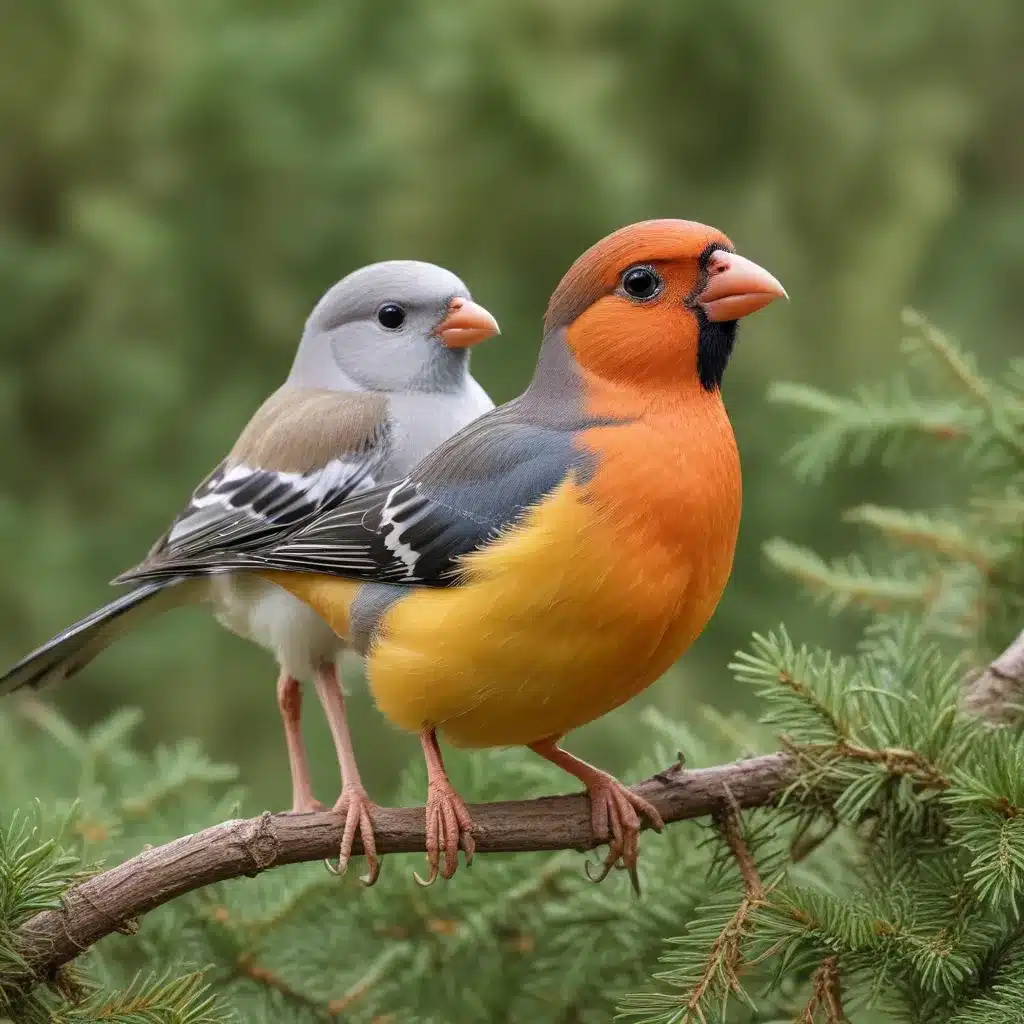
Avian Socialization
Birds are highly social creatures, and the way they interact and communicate within a flock can have a significant impact on their overall wellbeing. Understanding avian behavior and ecology is crucial when it comes to successfully introducing new birds into an existing flock.
Avian Behavior and Ecology
In the wild, birds typically live in complex social structures, with defined hierarchies and territories. These flocks provide birds with a sense of security, companionship, and opportunities for social interaction and learning. Within a flock, birds engage in a variety of behaviors, from vocalizations and displays to physical interactions, all of which serve to establish and maintain their social dynamics.
Social Structure of Bird Flocks
Birds in a flock exhibit a distinct hierarchy, with a clear dominance structure. This hierarchy is determined by factors such as age, size, and individual personality traits. Dominant birds often have priority access to resources, such as food and nesting sites, while subordinate birds must learn to navigate these social dynamics.
Territoriality and Dominance Hierarchy
Territoriality is a common behavior among birds, as they strive to defend their resources and nesting areas from perceived threats. This can be particularly evident when introducing a new bird into an established flock, as the existing birds may perceive the newcomer as a threat to their territory and social status.
Introducing New Birds
When bringing a new bird into your home, it’s important to consider the existing flock dynamics and take steps to ensure a smooth integration process. Rushing the introduction can lead to stress, aggression, and even physical harm to the birds involved.
Preparing the Existing Flock
Before introducing a new bird, it’s crucial to prepare your existing flock. This may involve providing additional enrichment and resources, such as extra perches, food, and water stations, to reduce the potential for competition and conflict. Additionally, you can gradually expose your current birds to the scent and sounds of the new arrival, helping to familiarize them with the newcomer.
Acclimating the New Bird
When introducing a new bird, it’s best to start with a gradual acclimation process. Begin by keeping the new bird in a separate cage, within visual and auditory range of the existing flock. This allows the birds to become accustomed to each other’s presence and vocalizations without the risk of direct interaction. Over time, you can slowly increase the amount of supervised interaction, carefully monitoring the birds’ body language and behavior for any signs of aggression or stress.
Avian Communication
Effective communication is essential for successful avian socialization. Birds have a rich repertoire of vocalizations, body language, and displays that they use to convey a wide range of messages, from territorial claims to courtship and submission.
Vocalizations and Calls
Birds communicate through a variety of vocalizations, including chirps, squawks, and whistles. Each species has its own unique set of calls, which serve different purposes, such as warning of predators, attracting mates, or maintaining flock cohesion. Understanding the meaning behind these vocalizations can provide valuable insights into the birds’ social dynamics and help you anticipate and respond to potential conflicts.
Body Language and Displays
In addition to vocalizations, birds also rely heavily on body language and displays to convey their intentions and emotional states. Behaviors such as wing-flapping, head-bobbing, and feather-puffing can indicate aggression, submission, or a desire for social interaction. Closely observing the birds’ posture, movements, and interactions can help you interpret their underlying motivations and adjust your approach accordingly.
Bird Housing and Environment
The physical environment in which birds are housed can have a significant impact on their social dynamics and overall wellbeing. Careful consideration of cage design, enrichment, and spatial arrangement can help facilitate successful introductions and maintain a harmonious flock.
Cage Design and Setup
When housing multiple birds, it’s important to provide a spacious, well-designed enclosure that allows for adequate movement, perching, and nesting opportunities. The cage should be tall enough for the birds to spread their wings and long enough to accommodate multiple perches and feeding stations. Avoid overcrowding, as this can lead to increased stress and competition within the flock.
Environmental Enrichment
Providing a stimulating and engaging environment is crucial for the physical and mental wellbeing of your birds. Incorporate a variety of perches, toys, and foraging opportunities to encourage natural behaviors and reduce the risk of boredom and aggression. Rotate and change the enrichment items regularly to maintain the birds’ interest and prevent resource guarding.
Flock Dynamics
Maintaining a harmonious flock requires a deep understanding of avian behavior and a willingness to carefully manage the social dynamics within the group. Addressing aggression and fostering positive interactions can help ensure the long-term success of your avian family.
Aggression and Conflict Resolution
Aggression is a common occurrence when introducing new birds or during periods of social upheaval. It’s essential to be able to recognize the signs of impending conflict, such as beak-lunging, wing-flapping, or territorial displays, and take appropriate action to de-escalate the situation. This may involve separating the birds, providing additional resources, or gradually reintroducing them under close supervision.
Integration and Bonding
With patience and careful management, new birds can often be successfully integrated into an existing flock. Encourage positive interactions by providing opportunities for shared activities, such as foraging or preening. Over time, the birds may form social bonds and establish a stable hierarchy, reducing the risk of ongoing conflicts.
Remember, every bird and flock is unique, so it’s important to observe your birds closely, adjust your approach as needed, and seek the guidance of experienced avian professionals if you encounter any challenges. By understanding and respecting the social nature of birds, you can create a harmonious and enriching environment for your feathered companions.
For more information on avian care and behavior, please visit Mika Birds Farm.


